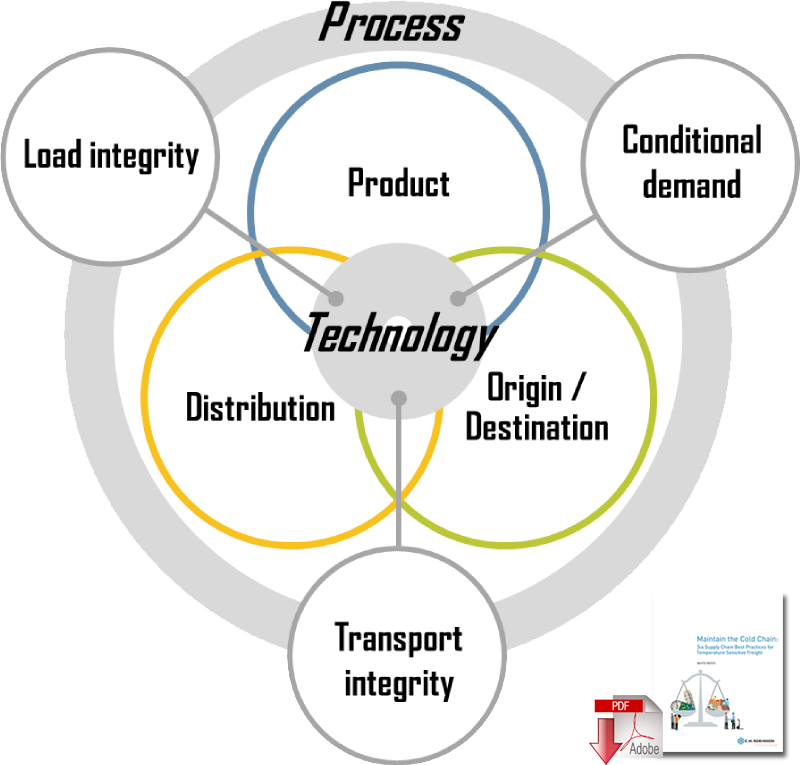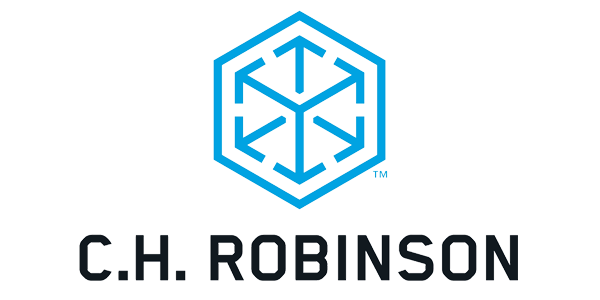Balancing Technology and Process to Maintain Your Cold Chain
Today’s technology offers a variety of tools to not only keep products at the right temperature, but to better monitor the load—from temperature sensors and GPS tracking to self-reporting alerts for computers and mobile devices.
Maintaining a cold chain is a science, especially in today’s global market.
There are numerous factors that must be considered at all times to secure the integrity of the temperature sensitive products being transported.
Successful cold chains require planning, communication, and the right technology at every step of the journey.
The science behind transporting materials at specific temperatures to maintain or extend their shelf life is an ongoing process.
From the first fishermen who transported their daily catch on ice blocks to more modern inventions—gel packs, quilts, liquid nitrogen—people are continuously searching for a better (and often more cost effective) way to safely transport temperature controlled items around the world.
This stems from a combination of globalization, increased safety regulations, and growing customer demands. Let’s take fresh produce for example; customers in northern regions are coming to expect the availability of fresh tropical fruit all year long. As the world shrinks, so too does our idea of “seasonal produce” and “regional products.”
This trend has led to increased maritime transportation of temperature sensitive products. Perhaps not the most recent invention, but certainly one of the most popular resources used in temperature controlled shipping are refrigerated containers.
In fact, in 1980 only 33% of refrigerated capacity was containerized, whereas in 2010 this share was up to 90%.* Thanks to these containers, temperature controlled products can withstand longer transit times without spoiling and consumers around the world can experience exotic foods and goods—perhaps for the first time—without leaving their local grocery store.
Elements of the Cold Chain

A cold chain can functionally be considered as the close interaction between three technologies:
- Product. A product has physical attributes requiring specific temperature and humidity conditions. These conditions dictate its transport, which must takes place in a manner that does not undermine its physical attributes to an extent that is judged unacceptable. These physical attributes relate to how perishable and fragile a product can be; how it handles the cold chain process. Otherwise, the product may lose its commercial value in whole or in part.
- Origin/Destination. The respective locations of where a temperature-sensitive product is produced and consumed. It underlines the difficulty of making a product available at a market from where it is produced, which can be an important constraint. Because of advances in cold chain logistics, it became possible to use increasingly distant sourcing strategies, some of which are spanning the world.
- Distribution. The methods and infrastructure available to transport a product in a temperature-controlled environment. They can involve temperature controlled containers (reefers), trucks and warehousing facilities.
Operational conditions within the cold chain must be consistent so that the processes of load and transport integrity of the shipments are maintained.
For an industry that’s constantly improving, the question soon becomes: “What’s next? How can we improve refrigeration technology for the changing industry?” The answer is not necessarily in improved cooling abilities (although that certainly plays a role), but rather on the supervision and reporting capabilities of reefers.
Today’s technology offers a variety of tools to not only keep products at the right temperature, but to better monitor the load—from temperature sensors and GPS tracking to self-reporting alerts for computers and mobile devices. Smart refrigerated units even help monitor the location, temperature, humidity, and motion of shipments in real time.
Advanced tracking abilities give relevant parties advanced warning of any changes or malfunctions with the equipment. These types of notifications can help ensure necessary maintenance is performed regularly or even secure alternate capacity before a load is compromised. Unfortunately, this type of technology can be costly. Until the price tag comes down, it’s important to weigh the benefits you’ll receive with the expense involved.
Whether or not you decide to employ the latest technology, it’s important to remember other tried and true methods to protect your temperature sensitive freight. From clear communication to process improvements, it is critical to encompass all involved parties in any changes. At a minimum, this should include carriers, vendors, providers, and receivers.
Like the rest of the transportation industry and the world at large, temperature controlled shipping is changing. Technology plays a large role in the dynamic changes we’re already seeing and will continue to see for many years to come. I wouldn’t be surprised that in the near future we’ll have the ability to regulate the temperature of refrigerated equipment from our mobile devices as easily as changing the thermostat at home.
* Hofstra University. “The Cold Chain and its Logistics”
Image from Daniel Dempster











